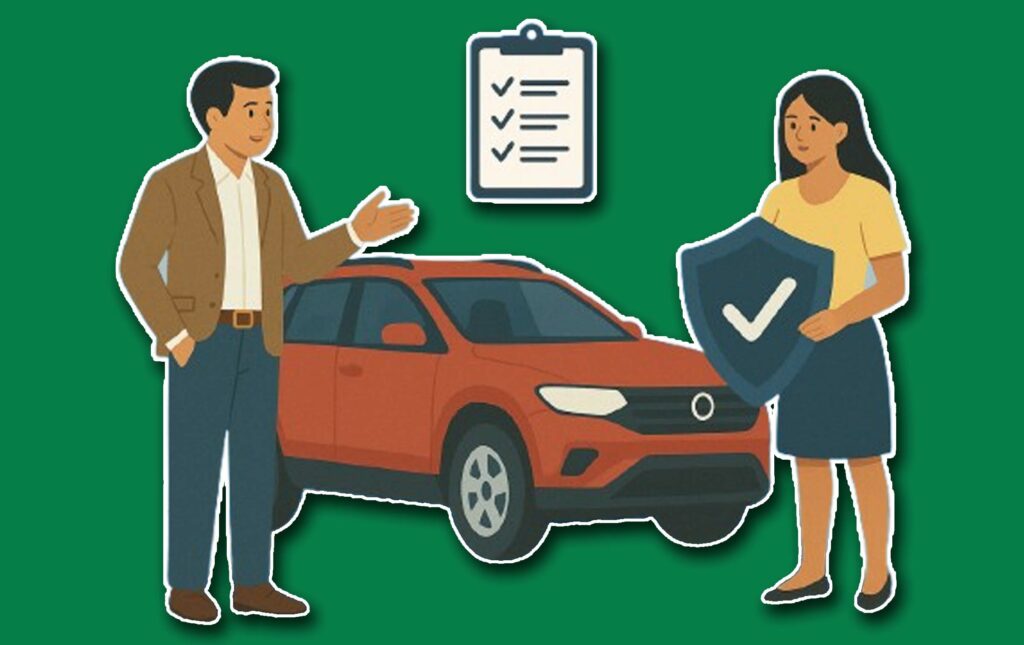Car Insurance for High-Risk Drivers in California – Car insurance is essential for every driver in California, not just because it’s legally required, but also because it provides financial protection in case of accidents, theft, or damage. However, for high-risk drivers, getting affordable and reliable insurance can be challenging. Being labeled as “high-risk” doesn’t mean you’re a bad driver, it simply means that, based on your driving record, insurance companies consider you more likely to file a claim.

In California, high-risk drivers often face higher premiums, stricter policy conditions, or even difficulty finding coverage. Understanding why you’re classified as high-risk. And what options are available.This can help you make better decisions when shopping for insurance. Thus, this article,will discuss Car Insurance for High-Risk Drivers in California.
Who Is Considered a High-Risk Driver in California
In California, insurance companies classify drivers as high-risk based on various factors that suggest a greater likelihood of accidents or insurance claims. Drivers with multiple traffic violations, at-fault accidents, or DUI (driving under the influence) convictions are the most commonly labeled as high-risk. Similarly, individuals with poor credit histories, lapses in insurance coverage. Or limited driving experience such as young or new drivers may also fall into this category.
California law requires all drivers to maintain a minimum amount of liability insurance. But high-risk drivers often face limited options and significantly higher costs. Insurance companies base their rates on risk assessment, and if your record shows risky behavior, they see you as a potential financial liability.
Why Insurance Costs More for High-Risk Drivers
Insurance companies calculate premiums by assessing the likelihood of paying out claims. For high-risk drivers, the probability of accidents or violations is statistically higher, which translates into greater financial risk for insurers. To balance that risk, insurance providers charge higher rates. For example, a driver with a clean record may pay $1,500 annually, while someone with a DUI or multiple speeding tickets could pay over $3,000 or more for similar coverage.
Moreover, some insurers may refuse to cover high-risk drivers altogether, leaving them with fewer options. Those that do provide coverage often require additional conditions. Such as installing a telematics device to monitor driving habits or requiring higher deductibles.
Types of Insurance Coverage Available
Even as a high-risk driver, you still have access to several types of car insurance coverage in California. The basic mandatory coverage includes bodily injury liability and property damage liability, which cover damages or injuries you cause to others. However, most drivers choose to add optional coverage such as collision. And comprehensive, which pay for damage to your own vehicle caused by accidents, theft, or natural disasters.
If you’re considered high-risk, some insurers might only offer limited policies or require special filings such as an SR-22 certificate. This certificate is a document your insurance company files with the California Department of Motor Vehicles (DMV) to prove that you meet the state’s minimum liability requirements. Drivers who have had their license suspended for DUI, reckless driving, or driving without insurance are often required to maintain an SR-22 for several years.
The California Automobile Assigned Risk Plan (CAARP)
For high-risk drivers who struggle to find coverage in the standard market, California offers the California Automobile Assigned Risk Plan (CAARP). Established by the state, CAARP helps drivers who have been denied insurance by traditional companies get the mandatory liability coverage they need. Under this plan, participating insurance companies share the responsibility of providing coverage to high-risk drivers, ensuring that everyone has access to basic protection.
While CAARP policies usually cost more than standard insurance plans, they guarantee that high-risk drivers can legally stay on the road. Over time, maintaining a clean driving record while insured under CAARP can help drivers regain eligibility for regular insurance and lower premiums.
How to Reduce High-Risk Status and Lower Premiums
Being labeled high-risk isn’t permanent. There are several steps drivers in California can take to improve their record and eventually qualify for better rates. One of the most effective ways is to practice safe driving consistently. Avoiding traffic violations, accidents, and DUIs for a few years can significantly improve your standing with insurance companies.
Enrolling in a defensive driving course can also help. Many insurers in California offer discounts to drivers who complete state-approved safety courses. Additionally, maintaining continuous insurance coverage without lapses and paying premiums on time shows financial responsibility, which insurers reward with lower rates.
If you have poor credit, improving your credit score can also make a difference. While California restricts insurers from using credit scores directly to set rates. Your financial responsibility still matters, especially when it comes to timely payments and claims history. You can also consider telematics programs insurance plans that use mobile apps or in-car devices to track your driving habits. Safe driving through these programs can lead to discounts, even for high-risk drivers.
Choosing the Right Insurance Company
Not all insurance companies handle high-risk drivers the same way. Some specialize in offering affordable policies to those with imperfect records. When comparing quotes, it’s important to check multiple insurers rather than sticking with one option. Look for companies that specifically mention high-risk coverage, SR-22 assistance, or flexible payment plans.
Working with an independent insurance agent can also be beneficial. They can compare rates across multiple insurers and help you find a policy that fits your needs and budget. Additionally, you should review your policy details carefully to ensure it includes the necessary coverage and doesn’t contain unnecessary add-ons that increase costs.
Conclusion
Car insurance for high-risk drivers in California can be challenging to navigate, but it’s not impossible. While premiums may be higher, understanding why you’re considered high-risk and taking steps to improve your record can help you secure better coverage over time. Maintaining a clean driving history, completing safety courses, and comparing quotes from different providers are key strategies for reducing costs.
California’s CAARP program ensures that even drivers with multiple violations or DUIs can still meet the state’s insurance requirements. Ultimately, being proactive and responsible behind the wheel will not only help you stay insured but also pave the way for lower premiums and a stronger driving reputation in the future.



